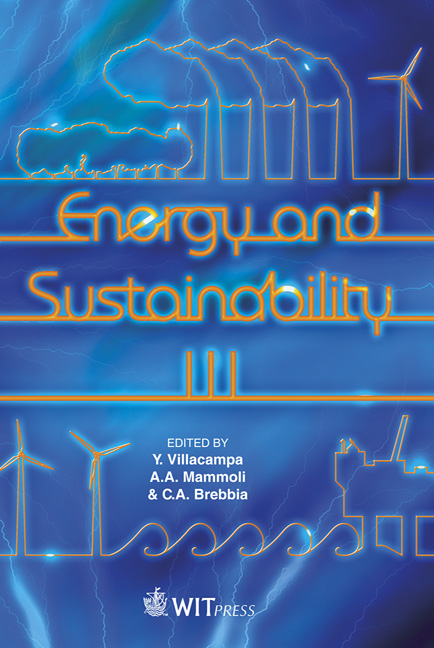Energy Recovery Of A Rotary Kiln System In A Calcium Oxide Plant
Price
Free (open access)
Transaction
Volume
143
Pages
7
Page Range
353 - 359
Published
2011
Size
489 kb
Paper DOI
10.2495/ESUS110301
Copyright
WIT Press
Author(s)
M. Aldeib, A. Elalem & S. Elgezawi
Abstract
The dominant source of calcium carbonate is limestone; the most common constituent of all rocks. It occurs in nature with clay, silica and other minerals, which may interfere in many applications. Synthetic calcium carbonate is produced on a large scale where a calcium chloride stream is treated with sodium or ammonium carbonate to produce a high grade of calcium carbonate. In turn, calcium carbonate is heated to 900–1000 degree centigrade in a horizontal lime kiln to produce calcium oxide (burned lime). Calcium oxide is used extensively in cement, iron and steel industries due to the low cost of the material and its accepted chemical properties. In this study, composition of raw meal, ultimate analysis of the fuel, dust contents in the exhaust gases, losses in ignation (COI) and exhaust gas composition in the preheated suspension are calculated. The heat losses from kiln exhaust are minimized. A secondary shell on the kiln surface is also investigated. In this work mathematical models for the calculations of inside heat transfer on the rotary are used, and the total energy utilized by burning fuel oil in the process of calcium oxide production is also calculated. The heat losses for kiln exhaust gas, hot air from the cooler stock losses and radiation losses from kiln surface are also minimized. A secondary shell on the kiln surface is studied in the present study, where 4% of total energy input is saved. This energy saving would result in a considerable reduction of fuel consumption in the kiln system. The overall efficiency would be improved by 5%. Keywords: rotary kiln reactor, radiant heat transfer, coating, combustion.
Keywords
rotary kiln reactor, radiant heat transfer, coating, combustion





